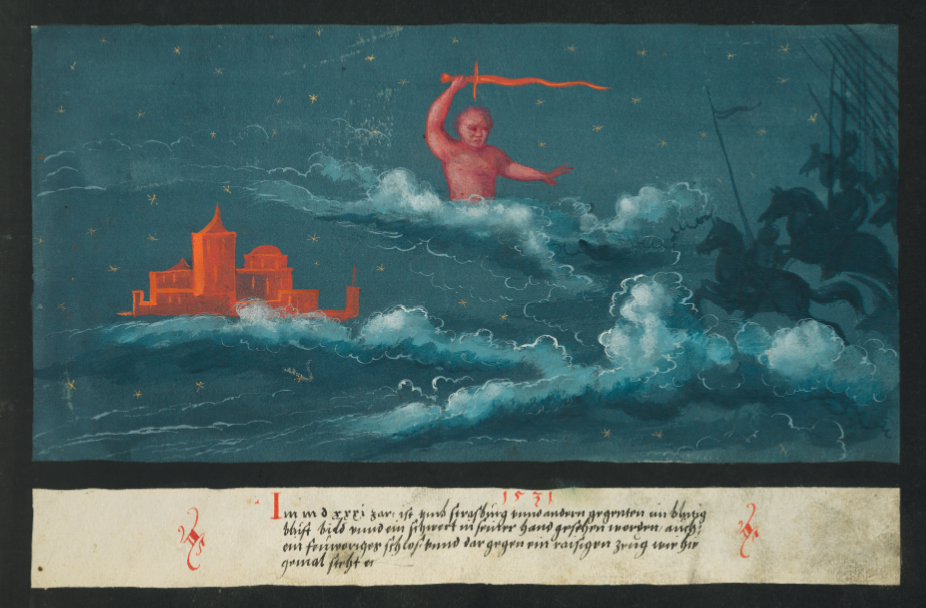Renaissance Nightmares
Every era has its innermost fears. In 16th-century Europe, when the Church dominated thought and actions, the prospect of divine wrath was itself horrifying enough. But, like the draw of Hollywood slasher flicks, fascination with violent and perverse signs from God was unabashed. Illustrations of inexplicable occurrences began cropping up around the 15th century, documenting events in the Bible and recorded history believed to be heaven-sent. Recently, a manuscript completed in Augsburg, Germany around 1552 resurfaced at a Munich auction. Remarkable for its vivid depictions accompanied by relatively brief texts, the book has been reproduced page-for-page by Taschen. With cosmic clashes, bloody rain, and many a deformity, The Book of Miracles illuminates the nightmares of Renaissance Europe’s collective consciousness.
“In many cases, they’re terrifying,” says art historian Joshua P. Waterman, who contributed one of the book’s two essays. “When you see really strange things like infants with swords and shields having a battle in the night sky, that is, of course, beyond weird.” But many of the surreal happenings are easily explained. “Some wonders are natural disasters–floods, hail, earthquakes–that were catalogued as warnings from God,” he explains.
The miracles represent phenomena chronologically, beginning with Old Testament stories like the Great Flood, progressing through secular historical episodes, and ending with fire and brimstone of Revelations. Long texts were deemed unnecessary, Waterman believes, because the images’ moralistic thrust was generally the same. “The pictures here are the important part,” says Waterman of the vibrant, boldly designed pages. “That tells us that the goal of this work was to not just create a listing, a collection of these phenomena, but to somehow communicate some of the wonder and mystery of them.”
Waterman has his Ph.D. in art history from Princeton, and is currently a research associate at the Germanisches Nationalmuseum in Nuremberg, Germany. Though few have better knowledge of medieval and Renaissance German art, he has thought of the book’s impression on fresh eyes. “It’s probably more fun to look at it if you know very little about it, because your fantasy can roam,” he reflects. “There are some dreamlike, haunting images that don’t need historical background for their appeal.”
THE BOOK OF MIRACLES BY JOSHUA P. WATERMAN AND TILL HOLGER-BORCHERT IS AVAILABLE NOW AT TASCHEN STORES, AND WILL BE AVAILABLE NATIONWIDE ON DECEMBER 15.







